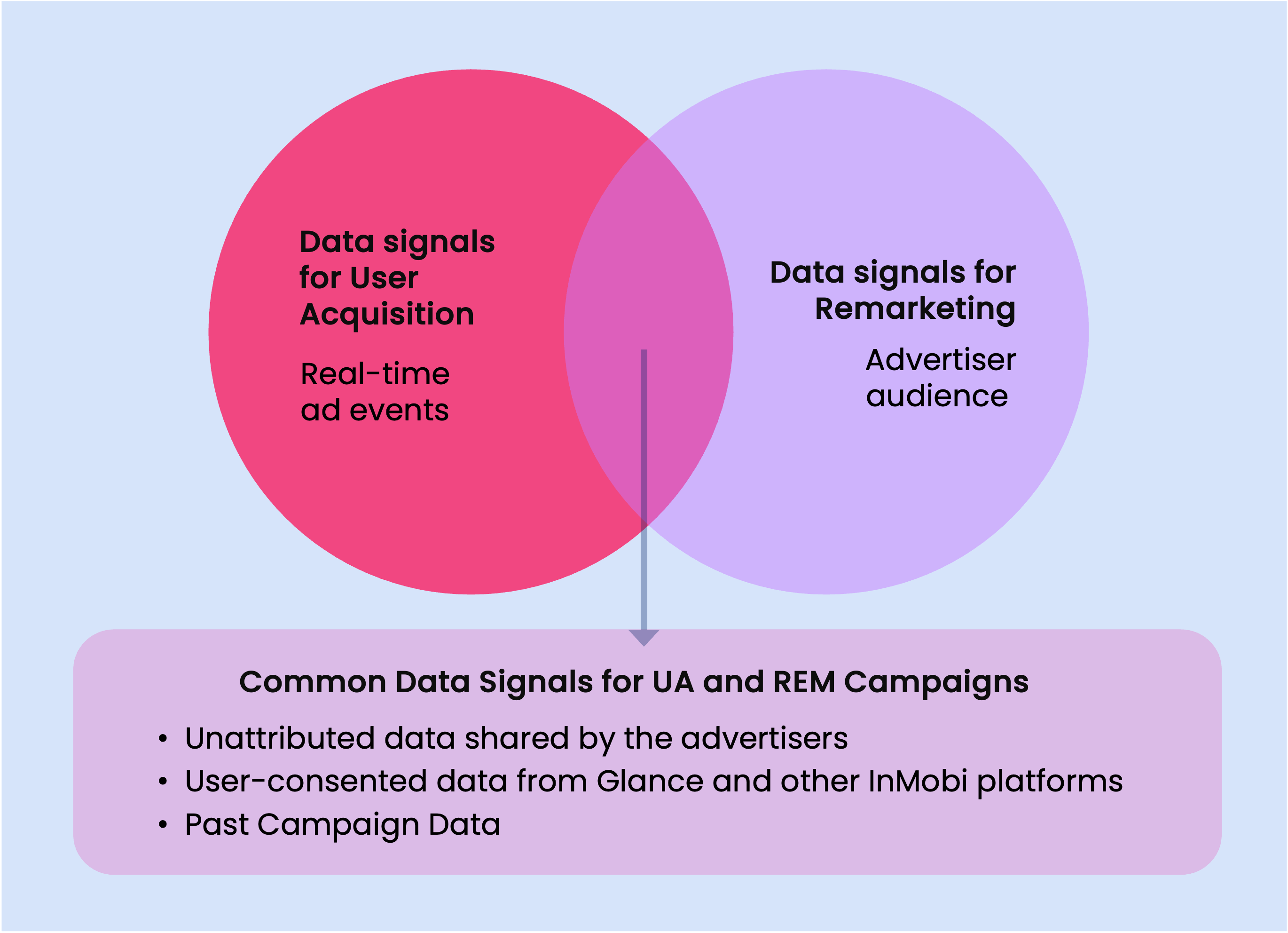Glance, a consumer-first content platform, has access to over 400 million users worldwide. Every third Android device has Glance. These users consume diverse content on Glance, including news, health, lifestyle, food, sports, entertainment, automobiles, etc. This extensive user base provides valuable first-party data for targeted campaigns.
For performance campaigns, the Glance team uses these rich first-party data from its platform and other InMobi platforms as the foundation for the Glance Machine Learning models. Additionally, Glance also leverages advertisers’ data, real-time events, and past campaign data (advertiser-specific) to enhance targeting efficiency. The models dynamically create audience segments to target the right set of users.
Glance ads strictly follow data policies to safeguard advertisers’ data. The advertisers' and campaigns’ data are only used to scale their future Glance campaigns and are not shared with or used for other advertisers’ campaigns.
The data required to improve the efficiency of the models comes from the following sources:

For UA campaigns, Glance uses first-party and advertisers’ data to dynamically build the targeting rules and audiences:
Your data is only used to scale your future campaigns and is not shared with or used for other advertiser’s campaigns.
For REM campaigns, Glance uses first-party and advertisers’ data signals to dynamically build the targeting rules and audiences:
Your data is only used to scale your future campaigns and is not shared with or used for other advertiser’s campaigns.
Although Glance first-party data are the primary source for building targeting rules and audiences, you must share unattributed data with the Glance team for the following reasons:
Unattributed data provide abundant information about user behavior and preferences and are not limited to ad-driven interaction. By enabling unattributed data on your MMP dashboards, you allow Glance to access a broader spectrum of data points. These include organic installs and user actions within the app, which contribute to more comprehensive training samples for Glance ML models.
With more robust data sets, models predict user behavior more accurately and optimize ad placements effectively.
In the absence of unattributed data, Glance may allocate some campaign period and budget to identify potential conversion opportunities across various app categories. This process is costly and inefficient due to the high variance in conversion probabilities and the sparsity of conversion events.
Instead, the Glance team can utilize the historical unattributed data patterns to make informed bidding decisions and allocate budget efficiently, thus, improving RoAS.
In scenarios where pre-historic data is sparse, unattributed data provides additional contexts and user interaction signals, even if it’s not directly linked to a conversion. This broader data view allows Glance internal systems to identify and learn from subtle patterns, user drops, and other signals that precede conversions, enriching the training dataset and enabling more precise targeting.
By installing this SDK update, you agree that your Children Privacy Compliance setting remains accurate or that you will update that setting, whenever there is a change in your app's audience. You may update the app's Children Privacy Compliance settings at https://publisher.inmobi.com/my-inventory/app-and-placements.